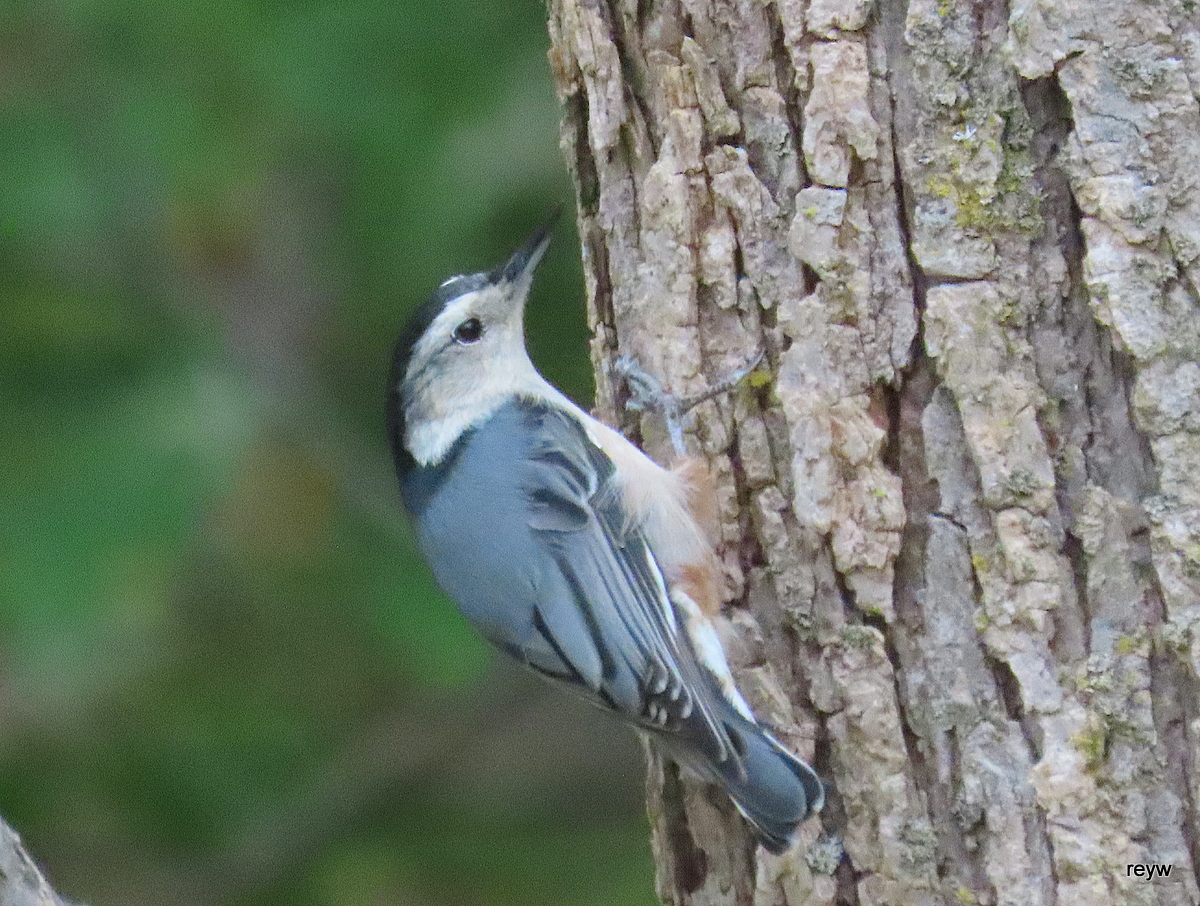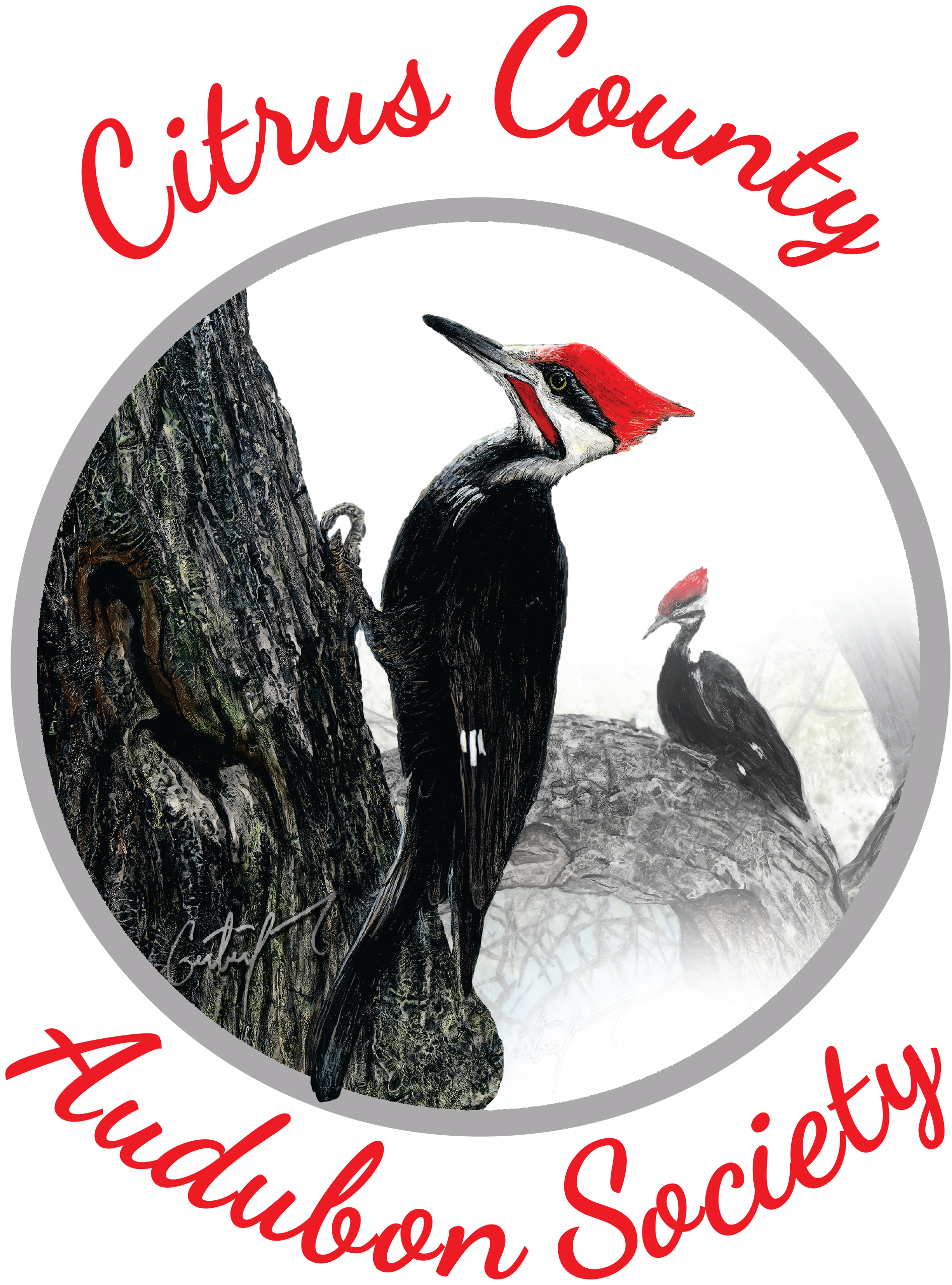by Rey Wells
Warbler action was anything but constant while I was on watch at the tree. Between occasional appearances by warblers, I was “forced” to photograph other resident species that came to forage.
Over the years, I have found White-breasted Nuthatches to be challenging to photograph. But it’s easier when I let them come to me rather than the reverse. Here is one that came to the tree to feed. My observations of this species indicate that they do more foraging upside down and working down rather than upright and working up.

The first two times I visited the tree in early September, there was a female Downy Woodpecker working there. The next time or two there was no woodpecker. On September 22nd, this male came to forage. Downies are the smallest woodpeckers in the northeast. In the southeast, the uncommon and localized Red-cockaded is slightly smaller.

The Black-capped Chickadee is one of the most populous resident birds in the northeast. For folks looking for migrating warblers, that’s a good thing whether it is May or September. If you can find chickadees, there is a good chance that warblers will be close by. During one of my visits to the tree, there were three chickadees foraging there. Here is one of them perched momentarily on an adjacent bush.

I saw my last migrant in the tree on September 23rd. It was another Magnolia Warbler. But this one was different. As the photo shows, there is a lack of dark feathers on its flank. This appears to be a juvenile that is on its way south for the first time. I’m happy that a young one was my last. It’s a small but positive indication that the cycle of life for this species will prevail and that I can look forward to more warbler visits to this tree next September.

